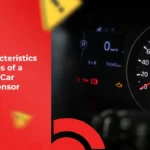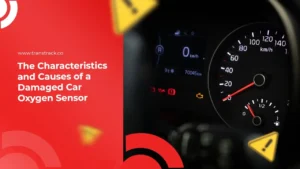Accident Reduction Strategy through Driver Behavior from TransTRACK
Posted on September 27, 2024 by Nur Wachda Mihmidati

Vehicle accidents often take center stage in discussions about traffic safety, and recent research suggests that driver behavior factors play a significant role in this. In one study, it was revealed that sudden vehicle drift and distraction due to cell phone use while driving were the two main factors contributing to accidents, reflecting the importance of focus and control while driving. In addition, other behaviors such as driving at high speeds and poor physical and mental conditions, such as stress and fatigue, also showed a significant impact on road safety. Given the fact that human error is the main cause of accidents, efforts to raise drivers’ awareness of the importance of driving carefully and distraction-free are crucial.
In order to reduce crashes, various strategic measures need to be taken, include using driver behavior feature. Research shows that interventions that directly target risky behaviors are critical to reducing crash risk, especially among novice drivers. Reforms in the licensing process, such as restrictions on the number of passengers and bans on late-night driving, have been shown to be effective in reducing crashes. However, to achieve more significant results, approaches that focus on behavioral change should be favored, such as training and education programs that educate young drivers about the dangers of risky behavior. With the implementation of comprehensive and data-driven strategies, it is hoped that crash rates can be reduced and road safety can be improved overall.
Main Factors Causing Vehicle Accidents
A study shows that the main cause of vehicle accidents comes from driver behavioral factors. Sudden vehicle drift (16.36%) and distraction due to cell phone use while driving (14.71%) were the two biggest factors, showing how important focus and control are when driving. Other factors such as high speed (8.69%) and stress and fatigue (8.64%) also contributed significantly, highlighting the risks posed by a driver’s physical and mental state. Drivers who violate traffic rules, such as driving in the opposite lane (7.25%) or disobeying the law at zebra crossings (3.45%), also exacerbate the situation on the road.
Although weather factors and vehicle damage are also causes of accidents, their influence is much smaller than human error. Vehicle damage only accounts for 2.93% of crashes, while bad weather plays a role of 1.65%. This suggests that the best solution to reduce accidents is to increase driver awareness of the importance of driving carefully, distraction-free, and in top physical and mental condition. More intensive education on the dangers of distracted driving and the importance of maintaining driver health is needed to reduce the number of accidents.

Crash Reduction Efforts
A study showed that risky driving behaviors reported by novice drivers are strongly associated with increased crash risk, with risk increasing by up to 50%. In this context, it is important to develop interventions that directly target such risky behaviors. Reforms in the licensing process, such as restrictions on the number of passengers and bans on late-night driving, have proven effective in reducing the number of crashes among young drivers. While most risky behaviors are reported to be rare, some activities such as driving with loud music and slightly exceeding speed limits are quite common, warranting more attention in safety campaigns.
To further reduce crashes, interventions that focus on behavior change should be prioritized over simply raising awareness of risks. Efforts such as licensing programs that encourage a period of “good behavior” for novice drivers can motivate them to obey traffic rules and reduce violations. In addition, campaigns that educate young drivers about the specific dangers of risky behavior, including the influence of loud music and excessive speed, should be stepped up. With an integrated and behavior-focused approach, it is expected that the accident rate among novice drivers can be significantly reduced.
TransTRACK’s Efforts to Minimize Accidents with Driver Behaviour Features
TransTRACK is committed to minimizing road accidents through the implementation of its innovative Driver Behaviour feature. This feature is designed to monitor and analyze drivers‘ driving behavior in real-time, enabling the identification of risky behaviors that may contribute to accidents. Some of the key features of Driver Behaviour include:
- Driving Behavior Monitoring: This feature includes monitoring of speed, acceleration, braking and sharp maneuvers. This data helps in identifying high-risk driving patterns, so that preventive measures can be taken.
- Early Warning: This system provides an immediate warning to the driver if risky driving behavior is detected, such as breaking the speed limit or braking suddenly. These alerts aim to raise drivers’ awareness of the risks they face.
- Monthly Behavior Report: TransTRACK provides regular reports that summarize driver driving behavior. These reports include an analysis of both positive and negative behaviors, allowing drivers and fleet managers to make necessary evaluations and improvements.
- Training and Education Programs: Based on the data obtained from TransTRACK’s Driver Behaviour feature, companies can design targeted training programs to help drivers improve their skills and reduce risky behavior.
- Integration with Fleet Management System: This feature integrates with the broader fleet management system, enabling more effective and responsive management of driver behavior, as well as optimizing safety and operational efficiency.
With the implementation of this Driver Behavior feature, TransTRACK seeks to create a safer driving environment, reduce the risk of accidents, and improve road safety.
Topic :
fleet managementvehicle safety
 Bahasa Indonesia
Bahasa Indonesia









